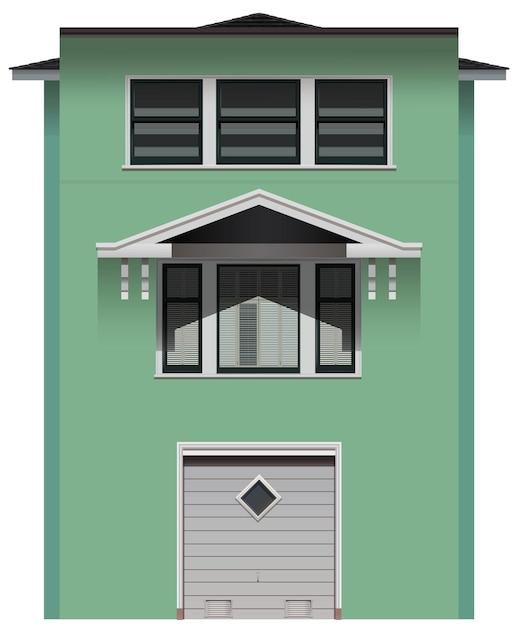Gases are all around us, from the air we breathe to the gas in a balloon. But have you ever wondered how a gas exerts pressure on its container? In this blog post, we’ll dive into the fascinating world of gas pressure and explore the forces at play.
We’ll answer questions like: Will lowering the temperature cause a decrease in gas pressure in a closed container? What happens to pressure in a closed container? And what is the force of gas particles against the walls of a container called?
So, if you’re curious about the mechanics behind gas pressure and want to understand why it decreases with temperature, then keep reading to satisfy your scientific curiosity. By the end of this post, you’ll have a clear understanding of how gases interact with their containers and the factors that influence their pressure.

How Does a Gas Exert Pressure on its Container?
Gas molecules, oh, what wild and rambunctious little things they are! But have you ever wondered how they manage to exert pressure on their container? Buckle up, my curious reader, because we’re about to delve into the fascinating world of gas pressure!
Understanding Gas Pressure: The Push of a Billion Little Bouncing Balls
The Invisible Dance of Molecules
Picture this: a crowd of people packed into a small room, bouncing off each other like crazed pinballs. Now, replace those people with gas molecules, and voila! You’ve got yourself a lively container buzzing with energy.
The Art of Molecular Collisions
You see, gas molecules are in a perpetual game of bumper cars, colliding and ricocheting off each other and the walls of their container. These molecular collisions may seem like chaos, but trust me, there’s a method to the madness.
Think about it this way: each collision imparts a tiny bit of force onto the walls of the container. And when you add up the collective force of billions upon billions of collisions per second, well, you’ve got yourself some serious pressure!
Pressure: It’s All about Molecular Pizzazz
A Dance of Speed
Now, let’s talk about speed. No, not the kind of speed that helps you outrun a charging rhino (though that would be handy too). We’re talking about the speed at which gas molecules zoom around, colliding with anything in their path.
The higher the speed of these gas molecules, the more frequently they collide with the container walls, and the greater the pressure they exert. It’s like a never-ending race of molecular speed demons, constantly pushing and shoving to make their presence known.
More Gas, More Pressure
Imagine a party with just a handful of guests. It might be a fun time, but the energy level won’t exactly be off the charts. Now, imagine that same party with a hundred more guests crammed into the room. Suddenly, the energy is palpable, right?
Well, the same principle applies to gas pressure. The more gas molecules there are in a given volume, the more collisions occur, and the higher the pressure becomes. It’s like throwing a wild party in a shoebox – things are bound to get a little crowded and rowdy!
Wrapping Up the Dance of Pressure
And there you have it, my dear reader! The secret behind how gases exert pressure on their containers has been revealed. It’s all thanks to the constant hustle and bustle of gas molecules, wreaking havoc with their perpetual collisions.
Next time you feel the pressure – literally – inside a balloon or a scuba tank, you’ll know exactly who to blame: those mischievous gas molecules, bouncing around like they’ve had one too many cups of cosmic coffee. So, go forth and impress your friends with your newfound knowledge of gas pressure – just don’t let it go to your head!

FAQ: How Does Gas Exert Pressure on its Container?
Will lowering the temperature cause a decrease in gas pressure in a closed container
When you lower the temperature, the gas particles start to slow down and lose their kinetic energy. As a result, they collide less frequently and with less force against the walls of the container, leading to a decrease in gas pressure.
What happens to pressure in a closed container
In a closed container, the pressure is determined by the number of gas particles and their speed. When gas particles collide with the walls of the container, they exert a force which we perceive as pressure. Therefore, if the number of gas particles or their speed increases, the pressure will also increase.
What is the force of gas particles against the walls of a container called
The force exerted by gas particles against the walls of a container is called pressure. Imagine gas particles as tiny superheroes who constantly bump into the container walls with their amazing strength.
Do gas particles move in a straight line
Yes, gas particles move in a straight line until they collide with another particle or the walls of the container. They are like hyperactive ping pong balls bouncing around in all directions, causing chaos in the container!
How does a gas exert pressure on its container
Gas particles are constantly in motion due to their kinetic energy. As they move, they collide with each other and the walls of the container, transferring their momentum. These collisions create force on the walls, resulting in gas pressure. It’s like a never-ending dance party where the gas particles jive with the container walls.
How do you fix low gas pressure
If you’re experiencing low gas pressure, the first thing to check is whether there are any blockages or leaks in the gas supply system. Ensure all valves are fully open and free from obstructions. If the issue persists, it’s best to contact a professional gas technician who can diagnose and fix the problem. Time to call in the experts and get that gas pressure pumping!
What change would increase the amount of gas
Increasing the temperature or adding more gas particles to a closed container would increase the amount of gas. It’s like inviting more guests to a party – the more, the merrier (and the higher the pressure).
What eventually happens to a gas if its pressure is increased
If the pressure of a gas is increased, its particles will bounce off the walls of the container more frequently and with greater force. The increased pressure creates a more crowded and energetic atmosphere, giving the gas a greater sense of urgency. It’s like a gas party with a sudden boost of energy!
Which of the following would increase the pressure of a gas
To increase the pressure of a gas, you can either increase the number of gas particles or increase their speed by raising the temperature. Just imagine gas particles as tiny superheroes pumping themselves up to increase the pressure – they’re ready to take on any container!
Why must a gas be kept in a closed container
A gas must be kept in a closed container to maintain its pressure. If there were no container, the gas particles would disperse into the atmosphere, leaving you with nothing but an empty space and a disappointing lack of pressure. Keep that gas contained, and let the pressure work its magic!
Why does pressure decrease with temperature
Pressure decreases with temperature because as you lower the temperature, the gas particles lose their energy and move slower. Sluggish particles collide with the walls of the container less frequently and with less force, resulting in a decrease in pressure. It’s like a gas party that starts to wind down when the energy level drops – time to grab a blanket and cozy up!
And there you have it – a comprehensive FAQ section that covers all your burning questions about how gas exerts pressure on its container. Now you’re armed with knowledge and ready to tackle any gas-related inquiries that come your way. Remember, gas particles may be invisible, but their pressure is definitely something you can feel!
